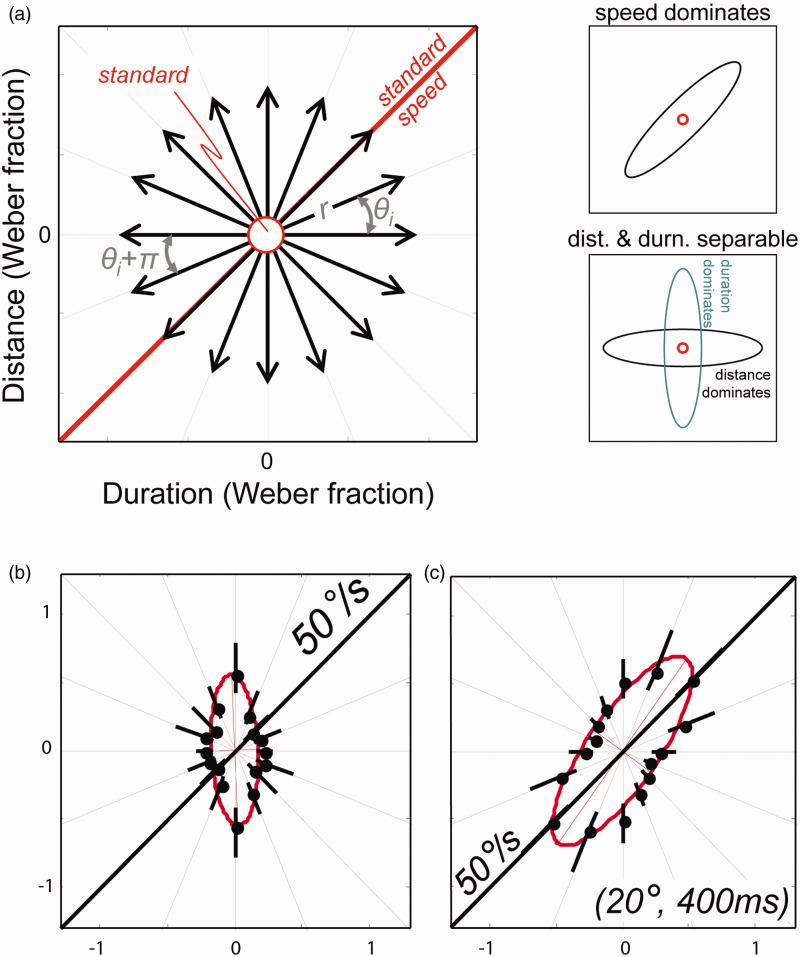Figure 4.
(a) Motion discrimination contours, defined in the duration (x axis) – distance (y axis) plane. Sensitivity thresholds were measured along the orientations θi using a three-interval oddity task consisting of two identical standard stimuli and one test stimulus, presented in a random order (see Freeman et al. 2014). When the perception of speed dominates performance, the resultant ellipse will be oriented along θ = 45° (top right). If duration and distance are separable and individually dominates performance, the ellipses will be aligned along the cardinal axes (bottom right). (b) Motion discrimination contour for a single naïve subject for speed = 50°/s, duration = 400 ms. In this task, the stimuli contained veridical distance and duration cues without additive noise. If auditory motion were encoded by specialized velocity detectors, we would expect a resultant ellipse along 45°. Instead, the results suggest that subjects were most sensitive to the duration cues. (c) Same as (b) but noise was added to the distance and duration cues in the stimuli, rending them less salient. The results showed a discrimination contour with an ellipse along 45°, suggesting that subjects were sensitive to speed, when distance and duration cues were made uninformative.

